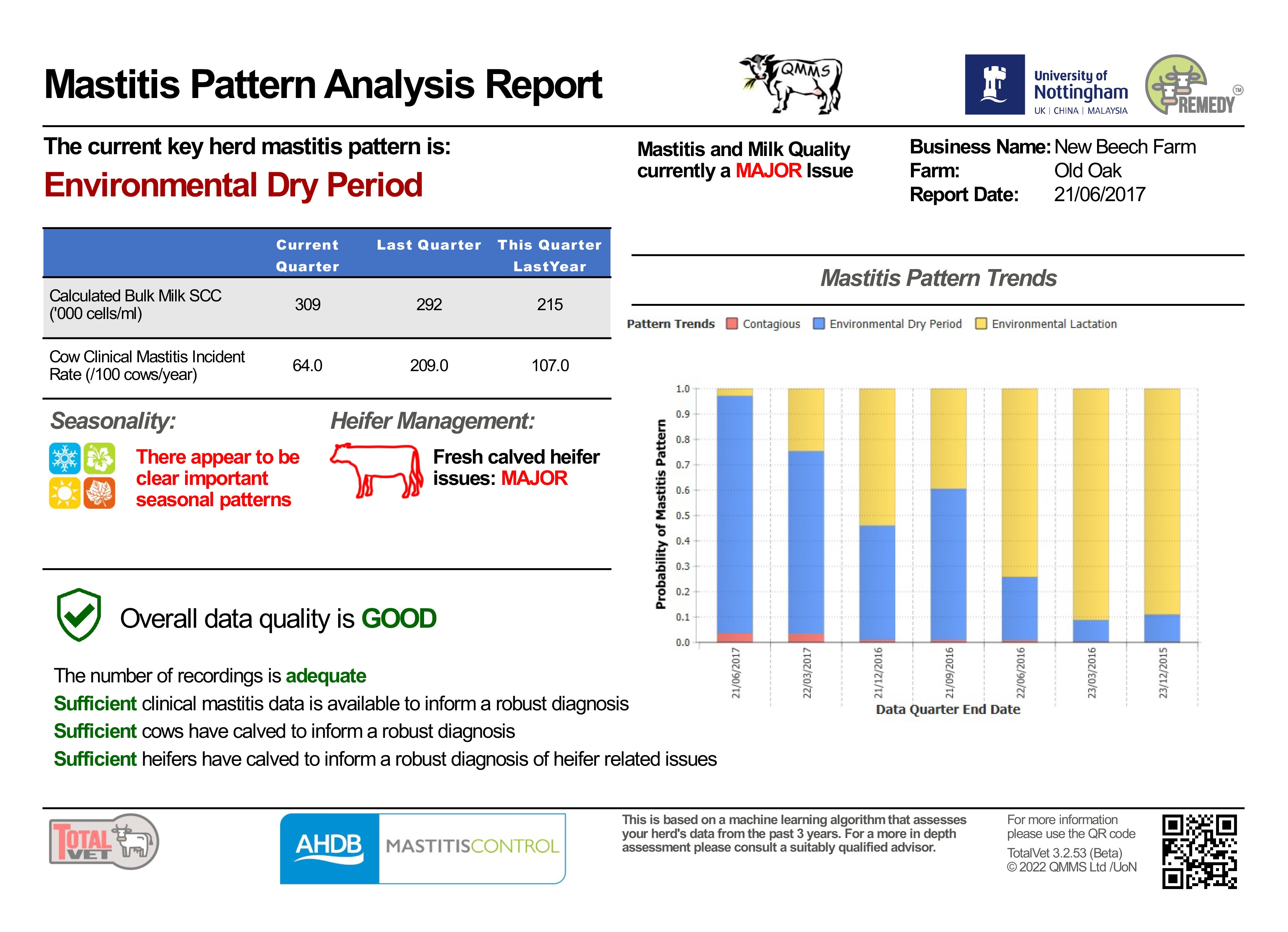- Home
- Automated Mastitis Pattern Analysis Tool
Automated Mastitis Pattern Analysis Tool
The Mastitis Pattern Analysis Tool helps identify problem areas and potential risks to udder health. It gives farmers and vets a way of tracking the progress of the herd.

The automated Mastitis Pattern Analysis Tool (MPAT) will analyse data from your individual herd and produce a report on the pattern of mastitis on your farm.
It will identify:
- Predominant infection pattern (Environmental/Contagious, Lactation/Dry period)
- Seasonality of infection
- Infection in heifers
This will allow farmers and vets to work together to prioritise key management areas and potentially detect emerging problems. Milk recording herds are at an advantage as individual cow somatic cell count (SCC) information is needed to run the MPAT.
Automated mastitis reports
The automated Mastitis Pattern Analysis Tool (MPAT) uses information from milk recording on somatic cell counts and clinical mastitis records, where available, to produce a farm-specific mastitis report.
Mastitis Pattern Analysis reports can be emailed to you automatically after every milk recording. To get regular reports, register on REMEDY. If you require assistance, contact dmcp@qmms.co.uk.
You no longer need to use a CDL converter to input data into the Mastitis Pattern Analysis Tool to produce reports. To streamline the process, QMMS Ltd and the University of Nottingham (with funding from BBSRC/AHDB Catalysing Partnerships) developed an automated data transfer link between milk recording organisations and the cloud-based REMEDY platform.
Example output from the automated MPAT
The output generated from the automated MPAT highlights the current key herd mastitis pattern, for example Environmental Dry Period. It also helps you to identify if there are seasonal patterns in your herd, and to determine the quality of the data used for the analysis.

Sectors:
Tags:

